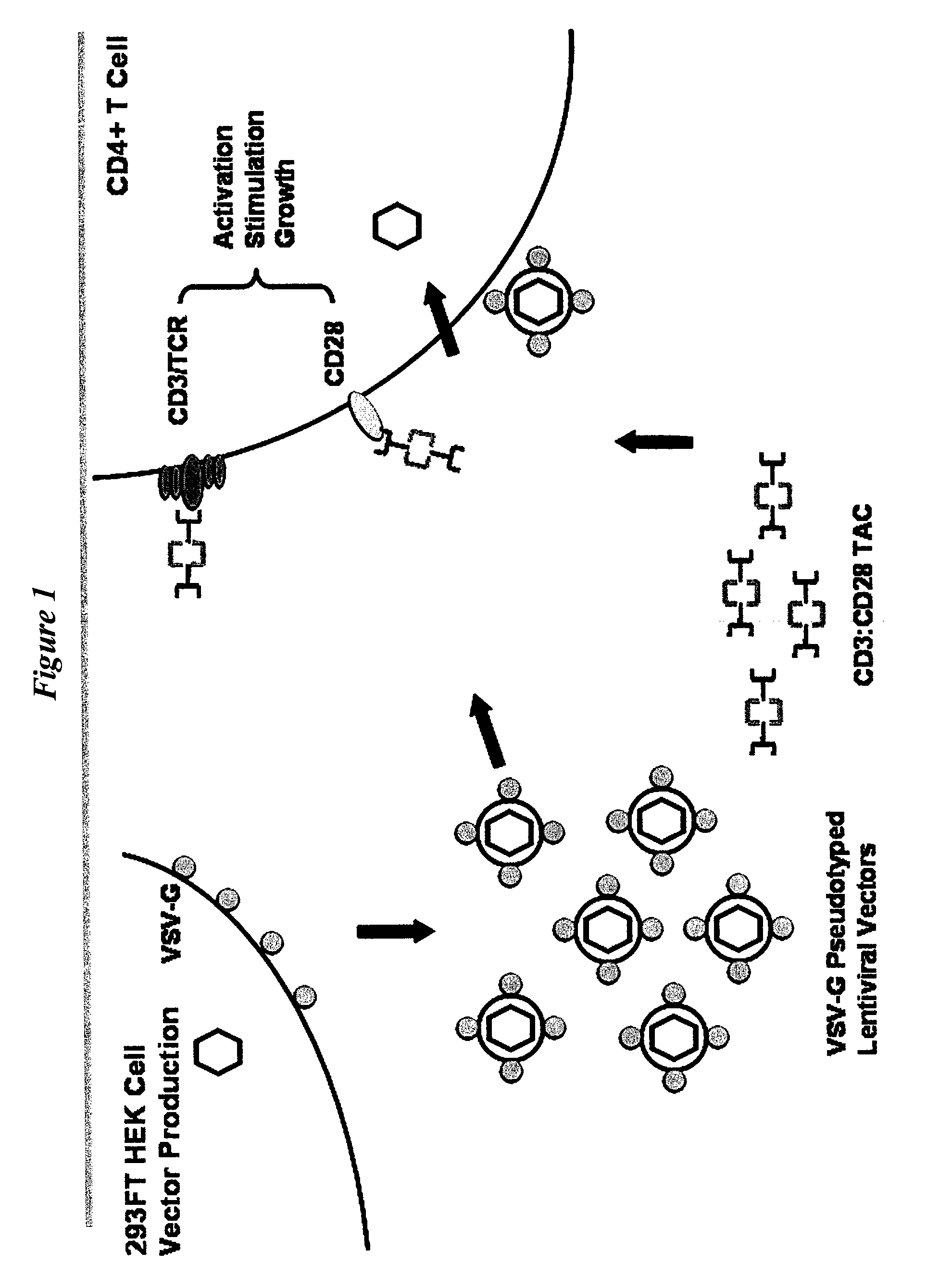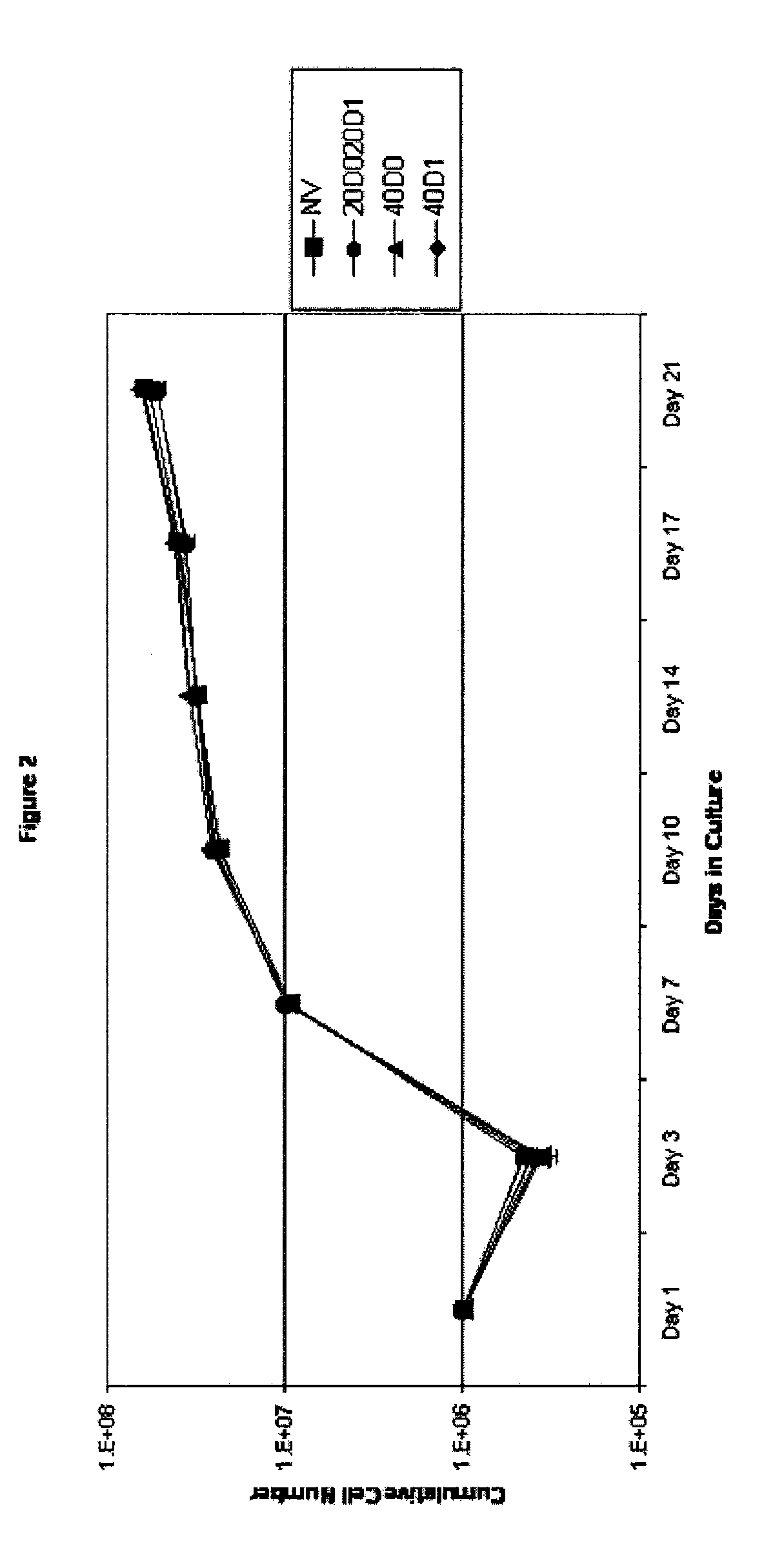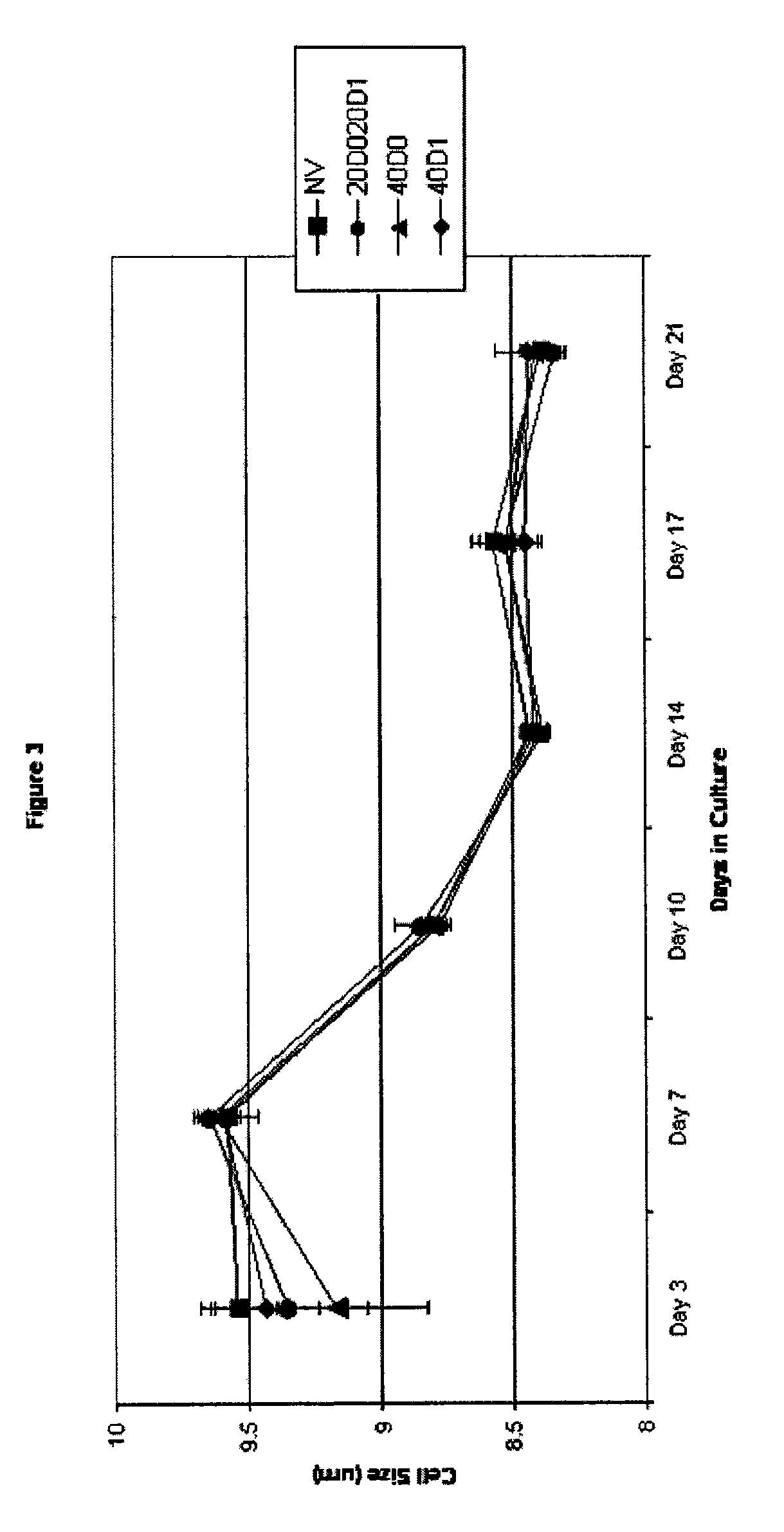Antibody complexes
a technology of antibody complexes and complexes, applied in antibody medical ingredients, immunological disorders, extracellular fluid disorders, etc., can solve the problems of short-lived need for mhc-matched antigen presenting cells (apcs), and achieve the effect of reducing the need for exogenous growth factors
- Summary
- Abstract
- Description
- Claims
- Application Information
AI Technical Summary
Benefits of technology
Problems solved by technology
Method used
Image
Examples
example 2
Results
[0092] The effect of TAC on cell expansion was determined, and the results are shown in FIG. 2. On Day 21, expansion levels were close to 100-fold.
[0093] The effect of TAC on cell size was determined, and the results are shown in FIG. 3.
[0094] FACS analysis was used to detect the expression of eGFP, CD25, and CD69 in cells treated with TAC. The results are shown in FIG. 4. The data shows that TAC treated cells displayed excellent expression of the CD25 and CD69 markers. The TAC treated cells were transduced at levels reaching up to 92%.
[0095] Confirmation of transduction by vector was performed by quantitative PCR analysis (Taqman). The results are shown in FIG. 5.
[0096] An experiment was conducted to determine the range and level of expression of several TCR Vβ families on cells that had been treated with TAC, and expanded for a period of 2 weeks. These data are presented in FIG. 6. Evident from the chart is that the range of TCR Vβ families expressed on expanded cells...
PUM
| Property | Measurement | Unit |
|---|---|---|
| soluble | aaaaa | aaaaa |
| surface | aaaaa | aaaaa |
| cell surface | aaaaa | aaaaa |
Abstract
Description
Claims
Application Information
 Login to View More
Login to View More - R&D
- Intellectual Property
- Life Sciences
- Materials
- Tech Scout
- Unparalleled Data Quality
- Higher Quality Content
- 60% Fewer Hallucinations
Browse by: Latest US Patents, China's latest patents, Technical Efficacy Thesaurus, Application Domain, Technology Topic, Popular Technical Reports.
© 2025 PatSnap. All rights reserved.Legal|Privacy policy|Modern Slavery Act Transparency Statement|Sitemap|About US| Contact US: help@patsnap.com



